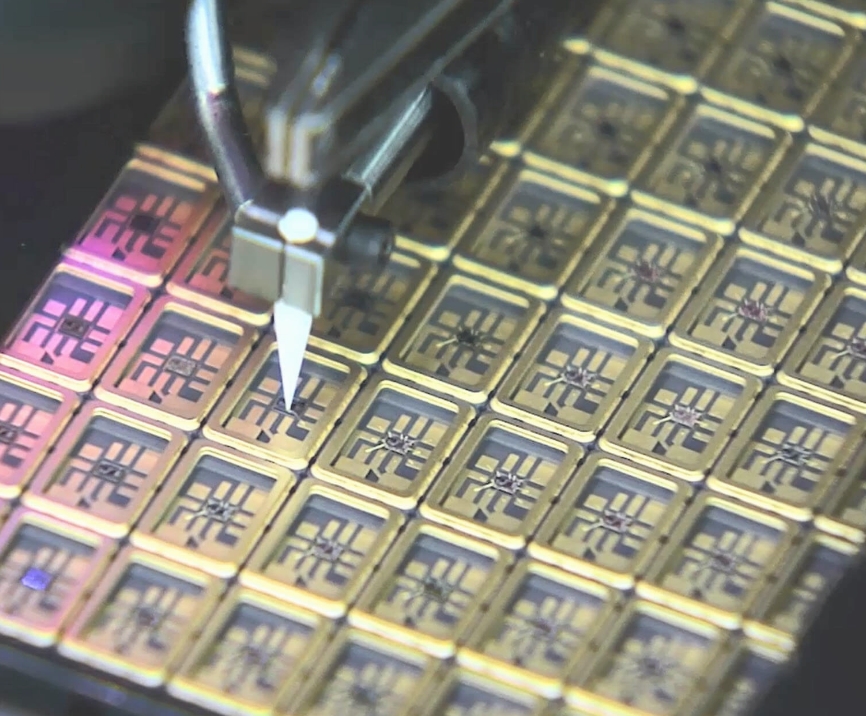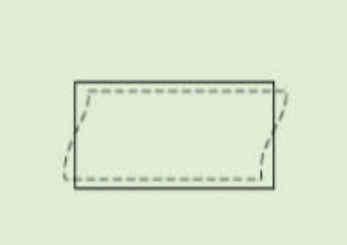ECLIPTEK CRYSTAL QUARTZ
一切的变化都是如此的有迹可循,敢于在变化之中寻找确定性,这是就是日蚀公司,为了更好验证自身的发展,日蚀公司致力于帮助用户解决在晶体行业所遇到的问题,并提供完美的贴片石英晶体解决方案,而对于每一款产品的追求更是以精益求精,创新的设计理念仔细研制,在打磨品质与性能方面的细节,更是超乎于寻常的工艺,使得用户能够感到到极致的体验,以及超一流的性能,同时在日蚀公司还在不断塑造自身的价值,也因此吸引更多与之有着相同价值观的用户。
在当今世界,快速流畅的数据传输至关重要。网络和服务器系统被设计成以闪电般的速度处理和转发信息。为了实现这一点,许多应用依赖于三位数兆赫兹(MHz)范围内的频率。
这样高的频率是不能用AT晶体的基音产生的。尽管石英盘具有40到50兆赫基频是可行的它们的生产涉及相当大的努力和相应的成本。因此,“泛音晶体”通常用于20兆赫以上的频率。
泛音与基音
每个石英坯都有其基本频率。除了这个“基音”,每个石英盘还有几个泛音。当电压施加在石英上时,石英以其基本音调振荡。它的泛音也在这个过程中被触发,但它们的信号明显弱于基音。事实上,在大多数情况下,泛音信号只会产生正常的相位噪声。
通过振荡器电路的巧妙构造,可以激励石英的泛音而不是基音。因此,为了放大石英的泛音信号,在振荡器电路中增加了一个附加的谐振电路。
这项技术允许工程师从石英晶体中“挤出”远高于其基频的频率。例如,如果石英以20MHz的基音振荡,第三泛音以60MHz振荡,第五泛音以100MHz振荡。由于振荡器电路的电子特性,泛音只能在奇数整数范围内被激发。
泛音石英如何振荡?
剩下的问题是关于泛音石英振荡的形状。你可以把泛音振荡想象成晶体基波振荡的倍数。
厚度剪切振子在其基音中的振荡
让我们拿着厚度剪切振荡器举个例子:在电压下,石英的顶部和底部在基音中向相反的方向移动。但是在泛音中,不仅是石英的上下两面在振荡,它内部的分子层也在振荡。这些层也向相反的方向移动,就像水晶在基础音调中的顶部和底部一样。石英晶振不仅在它的外部振动,也可以说“在它自身”振动。
形象地说,人们可以把泛音石英想象成一个连接在长链上的钟摆。在基音中,只有钟摆会摆动,但在泛音中,每个链节也会摆动。
高达250兆赫的频率
受泛音驱动的石英可以产生频率高达250MHz,从而为通信技术中的快速数据传输创造了完美的基础。
A fast and smooth data transmission is critical in today’s world. Network and server systems are designed to process and forward information at lightning fast speeds. To achieve this, many of these applications depend on frequencies in the three-digit megahertz (MHz) range.
制造商零件编号
供应商
描述
工作温度
EB2532YA12-20.000M TR
Ecliptek晶振
CRYSTAL 20.0000MHZ 12PF SMD
-40°C ~ 125°C
EB2532YA12-26.000M TR
Ecliptek晶振
CRYSTAL 26.0000MHZ 12PF SMD
-40°C ~ 125°C
EB2532YA12-28.63636M TR
Ecliptek晶振
CRYSTAL 28.63636MHZ 12PF SMD
-40°C ~ 125°C
EB1216JA10-27.120M TR
Ecliptek晶振
CRYSTAL 27.1200MHZ 10PF SMD
-40°C ~ 85°C
EB1216JA10-27.000M TR
Ecliptek晶振
CRYSTAL 27.0000MHZ 10PF SMD
-40°C ~ 85°C
EB1620YA10-32.000M TR
Ecliptek晶振
CRYSTAL 32.0000MHZ 10PF SMD
-40°C ~ 125°C
EB1620YA10-27.120M TR
Ecliptek晶振
CRYSTAL 27.1200MHZ 10PF SMD
-40°C ~ 125°C
EB1216YA10-27.000M TR
Ecliptek晶振
CRYSTAL 27.0000MHZ 10PF SMD
-40°C ~ 85°C
EB1216YA10-26.000M TR
Ecliptek晶振
CRYSTAL 26.0000MHZ 10PF SMD
-40°C ~ 85°C
EB1216YA10-25.000M TR
Ecliptek晶振
CRYSTAL 25.0000MHZ 10PF SMD
-40°C ~ 85°C
EA2025JA18-25.000M TR
Ecliptek晶振
CRYSTAL 25.0000MHZ 18PF SMD
-40°C ~ 85°C
EA3250MA10-14.7456M TR
Ecliptek晶振
CRYSTAL 14.7456MHZ 10PF SMD
-40°C ~ 85°C
EB3250JA12-12.000M TR
Ecliptek晶振
CRYSTAL 12.0000MHZ 12PF SMD
-40°C ~ 85°C
EB3250JA12-24.000M TR
Ecliptek晶振
CRYSTAL 24.0000MHZ 12PF SMD
-40°C ~ 85°C
EA3250FA18-25.000M TR
Ecliptek晶振
CRYSTAL 25.0000MHZ 18PF SMD
-40°C ~ 85°C
E1SFA12-3.6864M TR
Ecliptek晶振
CRYSTAL 3.6864MHZ 12PF SMD
-40°C ~ 85°C
EA2532LA18-32.000M TR
Ecliptek晶振
CRYSTAL 32.0000MHZ 18PF SMD
-40°C ~ 85°C
EA2532QA18-16.000M TR
Ecliptek晶振
CRYSTAL 16.0000MHZ 18PF SMD
-40°C ~ 85°C
EA2532LA18-12.000M TR
Ecliptek晶振
CRYSTAL 12.0000MHZ 18PF SMD
-40°C ~ 85°C
EA2532QA18-12.000M TR
Ecliptek晶振
CRYSTAL 12.0000MHZ 18PF SMD
-40°C ~ 85°C
EB2532JA12-25.000M TR
Ecliptek晶振
CRYSTAL 25.0000MHZ 12PF SMD
-40°C ~ 85°C
EB2532JA12-32.000M TR
Ecliptek晶振
CRYSTAL 32.0000MHZ 12PF SMD
-40°C ~ 85°C
EB2532JA12-20.000M TR
Ecliptek晶振
CRYSTAL 20.0000MHZ 12PF SMD
-40°C ~ 85°C
EB1620YA10-27.000M TR
Ecliptek晶振
CRYSTAL 27.0000MHZ 10PF SMD
-40°C ~ 125°C
EB2532JA12-24.576M TR
Ecliptek晶振
CRYSTAL 24.5760MHZ 12PF SMD
-40°C ~ 85°C
EB2532JA12-26.000M TR
Ecliptek晶振
CRYSTAL 26.0000MHZ 12PF SMD
-40°C ~ 85°C
EB2532JA12-12.000M TR
ECLIPTEK CRYSTAL
CRYSTAL 12.0000MHZ 12PF SMD
-40°C ~ 85°C
EB2532JA12-12.288M TR
Ecliptek晶振
CRYSTAL 12.2880MHZ 12PF SMD
-40°C ~ 85°C
EB2532JA12-16.000M TR
Ecliptek晶振
CRYSTAL 16.0000MHZ 12PF SMD
-40°C ~ 85°C
EB2532YA12-12.000M TR
Ecliptek晶振
CRYSTAL 12.0000MHZ 12PF SMD
-40°C ~ 125°C
EB2532YA12-30.000M TR
Ecliptek晶振
CRYSTAL 30.0000MHZ 12PF SMD
-40°C ~ 125°C
EB2532YA12-32.000M TR
Ecliptek晶振
CRYSTAL 32.0000MHZ 12PF SMD
-40°C ~ 125°C
EB2532YA12-13.560M TR
Ecliptek晶振
CRYSTAL 13.5600MHZ 12PF SMD
-40°C ~ 125°C
EB2532YA12-24.576M TR
Ecliptek晶振
CRYSTAL 24.5760MHZ 12PF SMD
-40°C ~ 125°C
EB2532YA12-16.000M TR
Ecliptek晶振
CRYSTAL 16.0000MHZ 12PF SMD
-40°C ~ 125°C
EB1216JA10-24.000M TR
Ecliptek晶振
CRYSTAL 24.0000MHZ 10PF SMD
-40°C ~ 85°C
EB1216JA10-24.576M TR
Ecliptek晶振
CRYSTAL 24.5760MHZ 10PF SMD
-40°C ~ 85°C
EB1216YA10-24.000M TR
Ecliptek晶振
CRYSTAL 24.0000MHZ 10PF SMD
-40°C ~ 85°C
EB1216YA10-24.576M TR
Ecliptek晶振
CRYSTAL 24.5760MHZ 10PF SMD
-40°C ~ 85°C
EB1620JA10-24.576M TR
Ecliptek晶振
CRYSTAL 24.5760MHZ 10PF SMD
-40°C ~ 85°C
EB1620JA10-25.000M TR
Ecliptek晶振
CRYSTAL 25.0000MHZ 10PF SMD
-40°C ~ 85°C
EB1216YA10-32.000M TR
Ecliptek晶振
CRYSTAL 32.0000MHZ 10PF SMD
-40°C ~ 85°C
EB1620JA10-32.000M TR
Ecliptek晶振
CRYSTAL 32.0000MHZ 10PF SMD
-40°C ~ 85°C
EB1216YA10-27.120M TR
Ecliptek晶振
CRYSTAL 27.1200MHZ 10PF SMD
-40°C ~ 85°C
EA2025JA18-30.000M TR
Ecliptek晶振
CRYSTAL 30.0000MHZ 18PF SMD
-40°C ~ 85°C
EA2025SA10-32.000M TR
Ecliptek晶振
CRYSTAL 32.0000MHZ 10PF SMD
-40°C ~ 85°C
EB3250AYA08-8.000M TR
Ecliptek晶振
CRYSTAL 8.0000MHZ 8PF SMD
-40°C ~ 125°C
E1SJA18-6.000M TR
Ecliptek晶振
CRYSTAL 6.0000MHZ 18PF SMD
-40°C ~ 85°C
E1SJA18-18.432M TR
Ecliptek晶振
CRYSTAL 18.4320MHZ 18PF SMD
-40°C ~ 85°C
E1SFA18-4.000M TR
Ecliptek晶振
CRYSTAL 4.0000MHZ 18PF SMD
-40°C ~ 85°C
E1SJA18-14.31818M TR
Ecliptek晶振
CRYSTAL 14.31818MHZ 18PF SMD
-40°C ~ 85°C
E1SJA18-6.144M TR
Ecliptek晶振
CRYSTAL 6.1440MHZ 18PF SMD
-40°C ~ 85°C
E1SJA18-28.63636M TR
Ecliptek晶振
CRYSTAL 28.63636MHZ 18PF SMD
-40°C ~ 85°C
E1SJA18-13.000M TR
Ecliptek晶振
CRYSTAL 13.0000MHZ 18PF SMD
-40°C ~ 85°C
E1SJA18-19.6608M TR
Ecliptek晶振
CRYSTAL 19.6608MHZ 18PF SMD
-40°C ~ 85°C
E1SJA18-9.8304M TR
Ecliptek晶振
CRYSTAL 9.8304MHZ 18PF SMD
-40°C ~ 85°C
E1SJA18-32.000M TR
Ecliptek晶振
CRYSTAL 32MHZ 18PF SMD
-
EA2025MA10-16.000M TR
Ecliptek晶振
CRYSTAL 16.0000MHZ 10PF SMD
-40°C ~ 85°C
EA2025MA10-32.000M TR
Ecliptek晶振
CRYSTAL 32.0000MHZ 10PF SMD
-40°C ~ 85°C
E1WCDA12-32.768K
Ecliptek晶振
CRYSTAL 32.7680KHZ 12.5PF TH
-10°C ~ 60°C
E1SJA18-18.000M TR
Ecliptek晶振
CRYSTAL 18.0000MHZ 18PF SMD
-40°C ~ 85°C
E1SJA18-20.000M TR
Ecliptek晶振
CRYSTAL 20.0000MHZ 18PF SMD
-40°C ~ 85°C
E1SJA18-14.7456M TR
Ecliptek晶振
CRYSTAL 14.7456MHZ 18PF SMD
-40°C ~ 85°C
E1SCA18-7.3728M TR
Ecliptek晶振
CRYSTAL 7.3728MHZ 18PF SMD
-40°C ~ 85°C
E1SEA18-16.000M TR
Ecliptek晶振
CRYSTAL 16.0000MHZ 18PF SMD
-20°C ~ 70°C
E1SEA18-12.000M TR
Ecliptek晶振
CRYSTAL 12.0000MHZ 18PF SMD
-20°C ~ 70°C
E1SJA18-10.000M TR
Ecliptek晶振
CRYSTAL 10.0000MHZ 18PF SMD
-40°C ~ 85°C
Such high frequencies cannot be generated with an AT-crystal in the fundamental tone. Although quartz discs with a fundamental frequency of 40 to 50MHz are feasible, their production involves considerable effort and corresponding costs. For this reason, “overtone crystals” are usually used for frequencies above 20 megahertz.
Overtone vs. Fundamental Tone
Every quartz blank has its basic frequency. Besides this “fundamental tone”, each quartz disc has several overtones. When electric voltage is applied to the quartz, it oscillates on its fundamental tone. Its overtones are also triggered in this process, but their signal is significantly weaker than that of the fundamental tone. In fact, most of the time the overtone signal results in nothing more than normal phase noise.
By clever construction of the oscillator circuit, it is possible to actuate the overtone of the quartz instead of the fundamental tone. Therefore, an additional resonant circuit is added to the oscillator circuit in order to amplify the overtone signal of the quartz.
This technique allows engineers to “squeeze” frequencies far above its fundamental tone out of a quartz crystal. For example, if a quartz oscillates in the fundamental tone at 20MHz, the third overtone oscillates at 60MHz and the fifth overtone oscillates at 100MHz. Due to the electronic properties of the oscillator circuit, the overtones can only be stimulated in the odd integer range.
How Does an Overtone Quartz Oscillate?
The remaining question is about the shape of an overtone quartz’s oscillation. You can imagine the overtone oscillation as a multiple of the crystal’s fundamental oscillation.
Let’s take the thickness shear oscillator as an example: Put under voltage, top and bottom of the quartz move in opposite directions in the fundamental tone. However, in the overtone, not only the upper and lower sides of the quartz oscillate, but also the molecular layers inside it. These layers also move in opposite directions, just like the crystal’s top and bottom in the fundamental tone. The quartz does not only vibrate on its outside, but “in itself”, so to speak.
Figuratively speaking, one can visualize an overtone quartz like a pendulum attached to a long chain. In the fundamental tone, only the pendulum swings, but in the overtone each individual chain link swings as well.
Frequencies of up to 250 Megahertz
A quartz driven by its overtone can generate a frequency of up to 250MHz, thus creating the perfect base for fast data transmission in communication technology.
“推荐阅读”
- Jauch石英晶体Q 40.0-JXS32-8-10/10-FU-WA-LF的石英毛坯有多厚?
- Transko石英晶体CS32H-F5050CQ12-65.000M-TR应用说明
- Statek晶体HGXO3DSTSM320.0M,30/50/I振荡器的操作指南
- 欧洲石英25HDK2261-A-156.250M差分振荡器输出逻辑
- WINTRON推出WTC705A系列TCXO用于数据通信应用
- FCD-Tech石英晶体F1612A-20-20-D-30-F-27.000MHz应用笔记
- Q-Tech新闻稿-MEMS与晶体振荡器QTCT5702C1B-24.576MHz
- GEYER新型KXO-77振荡器
- Jauch专为高性能计算应用开发JOH32
- QANTEK品牌有望成为首选供应商
相关技术支持
- KVG石英振荡器T-53S3A2070JXH-LF-26.000MHz数据手册
- Transko石英晶体CS32H-F5050CQ12-65.000M-TR应用说明
- Golledge石英晶振GXO-3306G在医疗器械设计中的作用
- ConnorWinfield晶振FTS125系列GPS定时和同步解决方案
- SiTime振荡器SiT1533AI-H4-D14-32.768S老化及其在精密计时中的重要性
- Statek晶体HGXO3DSTSM320.0M,30/50/I振荡器的操作指南
- 欧洲石英25HDK2261-A-156.250M差分振荡器输出逻辑
- MtronPTI高频XO9095-002R低相位噪声和低g灵敏度OCXO
- Cardinal抖动在高性能设计中的重要性CPPC7L-A5BR-40.0TS
- Silicon Labs超小型BG22系列蓝牙解决方案
 手机版
手机版





 添加微信
添加微信


